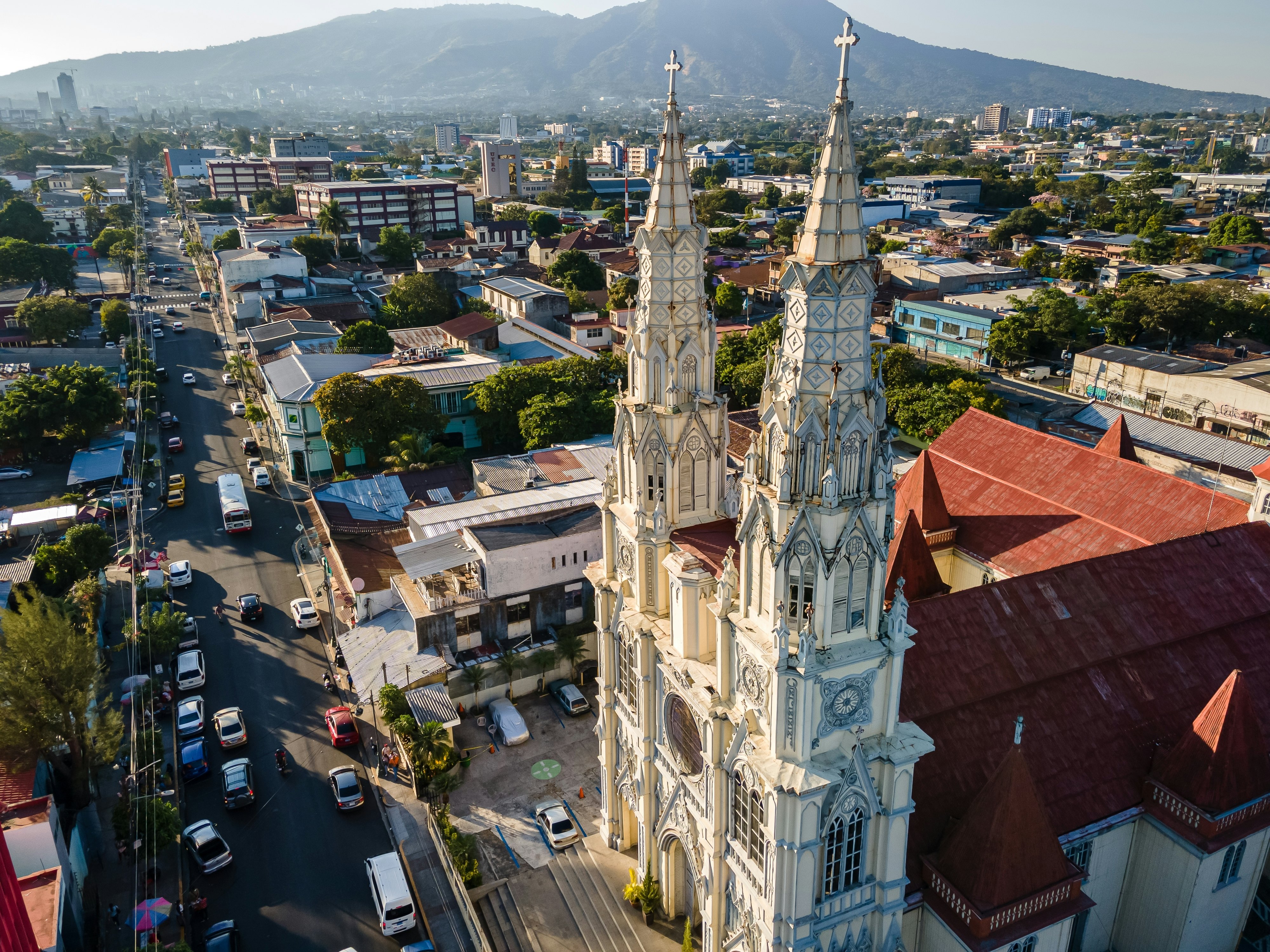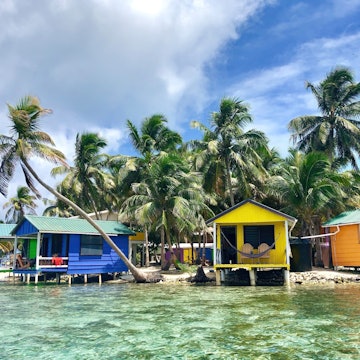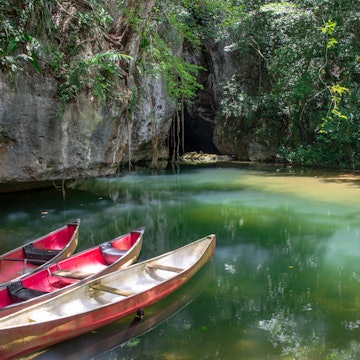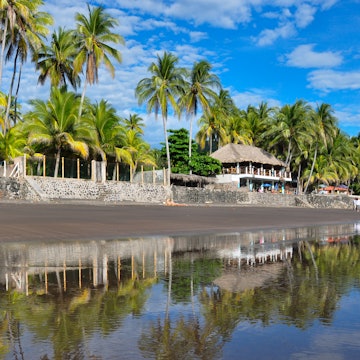
How to get around in El Salvador



Buses can take you all over El Salvador, from the cities to the volcanoes. Wirestock Creators/Shutterstock
As the smallest country in Central America – yes, it’s even smaller than Belize – El Salvador misses out on a lot of the fanfare lavished on its neighbors. You can thank both geography (this is the only nation on the isthmus without a Caribbean coastline) and the nation’s troubled past, with first a civil war and then problems with gangs discouraging many sightseers.
But things are changing in El Salvador, and for the better. Crime is down, investment in tourist infrastructure is up, and visitors are flocking back to the country’s surf-lapped Pacific beaches and laid-back country towns. Best of all, you’ll be stepping off the mainstream tourist trail: travel here feels less commercial and experiences more authentic.
There’s plenty to do in El Salvador, from epic surfing to hiking through cloud forests and drifting through charming coffee-producing country towns in the hills. To help you put your itinerary together, here’s everything you need to know about getting around in El Salvador.

Buses are the backbone of public transport in El Salvador
El Salvador has no passenger railways, though its comprehensive and far-reaching bus network will give you an authentic experience of Salvadoran life. While modern air-conditioned coaches link major cities such as San Salvador, Santa Ana and San Miguel, you’ll complete many journeys traveling cheek-by-jowl with locals on village buses – repurposed US school buses repainted in rainbow colors.
Schedules for village buses (sometimes known as “chicken buses”) are quite informal, but fares are inexpensive. What’s more, buses go almost everywhere, though it may take a few changes to reach your destination. You can normally turn up at the bus stand and find space on the next bus – keeping in mind you might be squeezed in with lots of other passengers and their boxes, bags and baskets.
Buses to popular destinations leave regularly between 5am and 7pm (with the short distances involved, few buses run overnight). You can often pay a little extra to board buses with air-conditioning. Safety standards are generally good, but petty theft can be a problem, so keep an eye on your belongings. The CentroCoasting website has useful advice for bus travelers.
If you’re traveling onward to other parts of Central America, companies such as Tica Bus and Transporte del Sol run luxury coaches between San Salvador and neighboring capitals such as Managua, Guatemala City and Tegucigalpa. While these cost more than the chicken buses, you can expect a more comfortable ride – and you won’t have to change buses at the border.
Private companies offer shuttle services in tourist hubs such as San Salvador, Santa Ana, El Tunco, El Zonte and along the Ruta de Las Flores. They also offer international services to Guatemala and Honduras, via shared car, minivan or bus.
Microbuses are widely used by locals for shorter journeys. These small vans are faster, less cramped and more comfortable than the full-sized buses, but they cost a little more. They’re particularly popular in the area around San Salvador.

Chartering a vehicle can be a comfortable way to travel
While you can rent a car in El Salvador, traffic is heavy around cities such as San Salvador, and car crime can be a problem. That said, your own car will let you explore the country in more depth, and you’ll find it easier to reach remote spots such as Parque Nacional Montecristo and the “El Oriente Salvaje” region to the south of San Miguel. You may need a 4WD for remote and rural areas, where roads can be potholed and unpaved.
Many people prefer to leave the driving to someone familiar with the roads and local safety protocols. Private car companies and hotels can arrange a car and driver for a sightseeing tour or a more comfortable transfer between the cities and the coast. Shared 4WDs supplement the bus services in rural areas, and drivers may be willing to make a special trip if you cover the cost of all the seats in the vehicle.
Hop on a boat to explore the coastline
El Salvador doesn’t have any scheduled ferry services along its 307km-long coastline, but you may end up chartering a boat or taking a boat tour to reach the islands dotted around the Golfo de Fonseca in the far east, or when crossing Lago Suchitlán to reach the Chalatenango region in the north. The inlets of the Bahía de Jiquilisco to the west of El Cuco are also best explored by boat, particularly if you want to get close to the marvelous birdlife.
El Salvador shares the Golfo de Fonseca with Honduras and Nicaragua, and it is sometimes possible to arrange boat travel between La Unión in El Salvador and Potosí in Nicaragua or the villages of Coyolito, Amapala and San Lorenzo in Honduras. Note that going by sea won’t save you much time or money, and there are land border crossings close by.

Use taxis, rideshares and buses to explore bigger cities
Taxis, Uber rideshares and city buses will help you get around bigger cities such as San Salvador and Santa Ana, though you should remain cautious of traveling into risky areas of town, particularly after dark. If you use conventional taxis, stick to official, licensed cabs with an “A” on their license plates. Making a booking through your hotel is often the safest bet. You may need to negotiate a fare with the driver before you start your journey.
Distances in El Salvador are not vast, and taxi and rideshare drivers may be willing to drive out of the city to nearby destinations – this is an easy way to reach El Tunco from San Salvador, for example. Again, negotiate a fare before you set off.
Arrange transfers ahead when you fly into San Salvador
San Salvador’s international airport is the main port of arrival to El Salvador for air passengers, and the 41km ride into the capital is relatively pain-free. The least expensive option is taking a local bus to the center, but it can be a hassle finding the right stop and you’ll have to put your luggage on your lap.
Another inexpensive option is to book one of Taxis Acacya’s shuttle services, which run every few hours between 7am to 6pm. Conventional taxis are plentiful at the airport, but fares are often hiked for visitors, so negotiate a fare before you commit to a ride. Many hotels in San Salvador can pick you up from the airport for an extra fee.
Accessible transportation in El Salvador
El Salvador is one of the trickier countries in the region for travelers with disabilities. Pavements are poorly maintained, roads are uneven and frequently cobbled, wheelchair-friendly rooms are usually limited to luxury hotels, and public buses are not accessible for wheelchair users. Your best bet is to arrange a tour with a private vehicle and driver.
This article was adapted from Lonely Planet’s Central America guidebook, published in October 2025.













